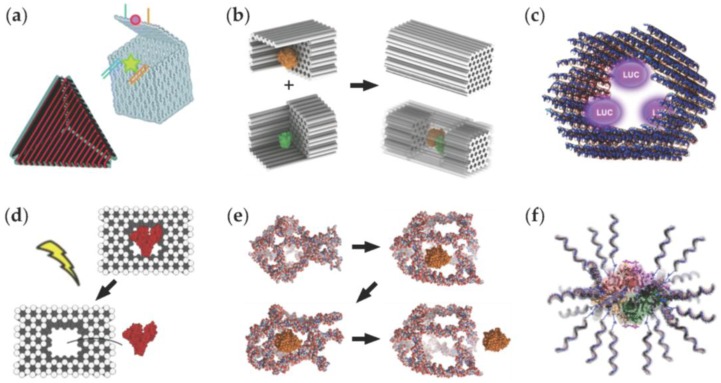Figure 5.
(a) Hollow DNA origami containers: a box with a switchable lid [56] and a tetrahedron [57]; (b) Two half-cages equipped with glucose oxidase (GOx, orange) and horseradish peroxidase (HRP, green) can form a closed box and encapsulate the enzymes. The closed box efficiently protects the assembled enzyme cascade pair from protease digestion [59]; (c) A DNA origami-based nanocarrier loaded with luciferase (LUC) enzymes. The enzyme activity can be tuned by coating the carrier with cationic polymers [60]; (d) A light-triggered release of proteins such as bovine serum albumin (BSA) from DNA origami container [61]; (e) A DNA cage that can trap and release an enzyme (HRP) through the temperature-controlled conformational changes [62]; (f) β-galactosidase (β-gal) can be coated by DNA strands for significantly enhanced cellular delivery [63]. A box with a lid in (a) is reproduced with permission from [56]. Copyright Nature Publishing Group, 2009. A tetrahedron in (a) is reproduced with permission from [57]. Copyright American Chemical Society, 2009. (b) is reproduced with permission from [59]. Published by Nature Publishing Group, 2016. (c) is reproduced with permission from [60]. Copyright The Royal Society of Chemistry, 2016. (d) is reproduced with permission from [61]. Copyright American Chemical Society, 2016. (e) is reproduced with permission from [62]. Copyright American Chemical Society, 2013. (f) is reproduced with permission from [63]. Copyright American Chemical Society, 2015.

